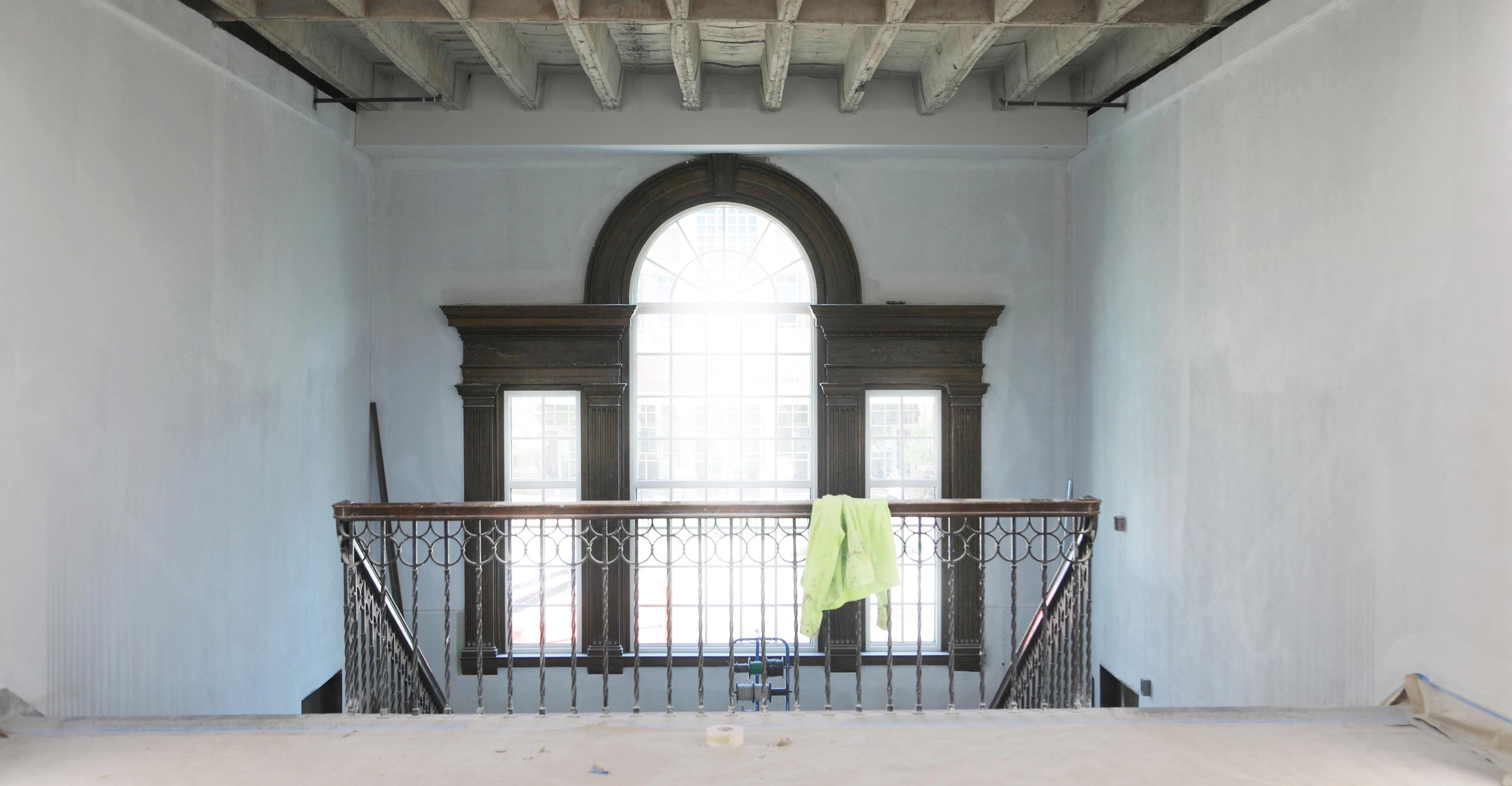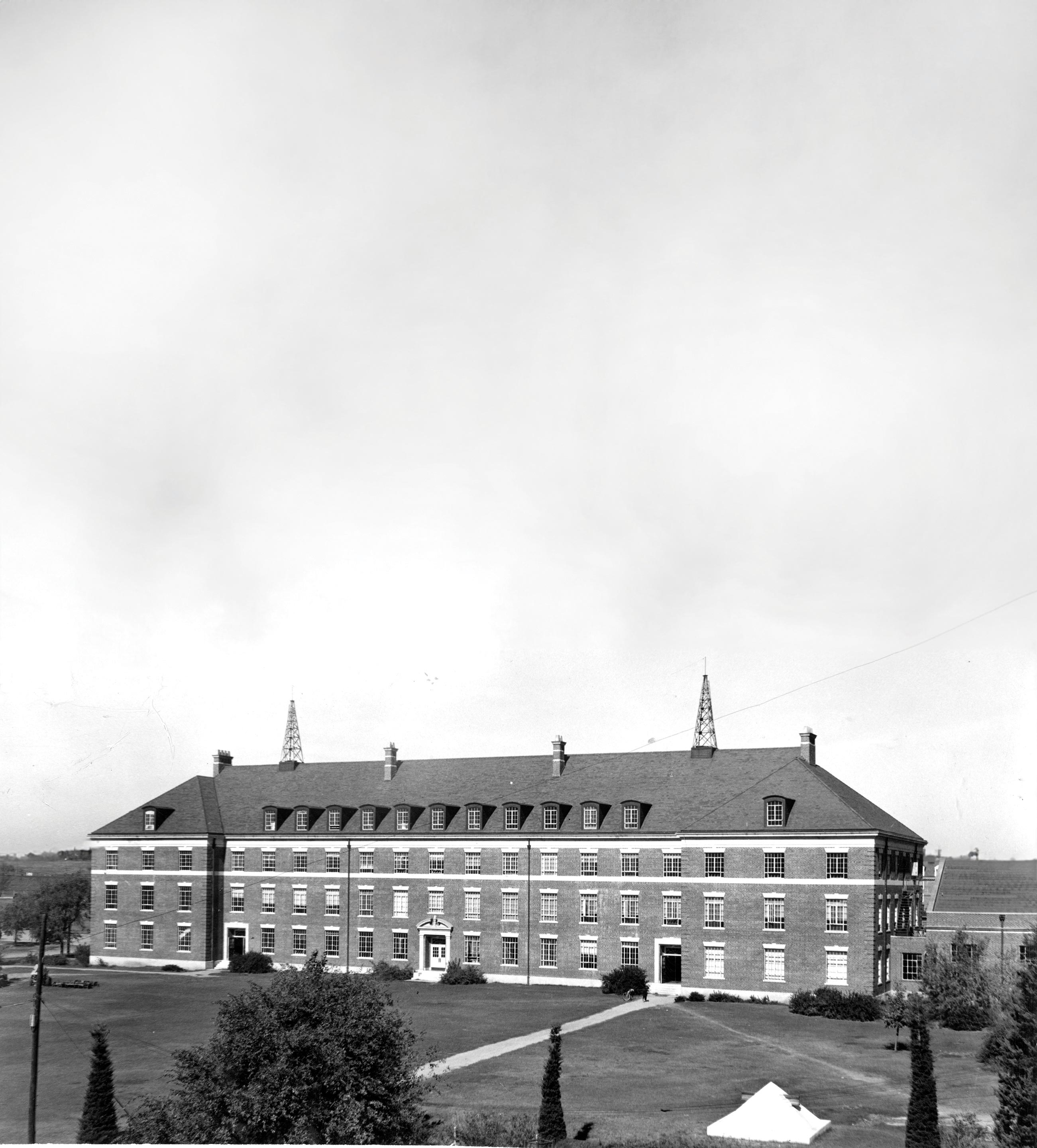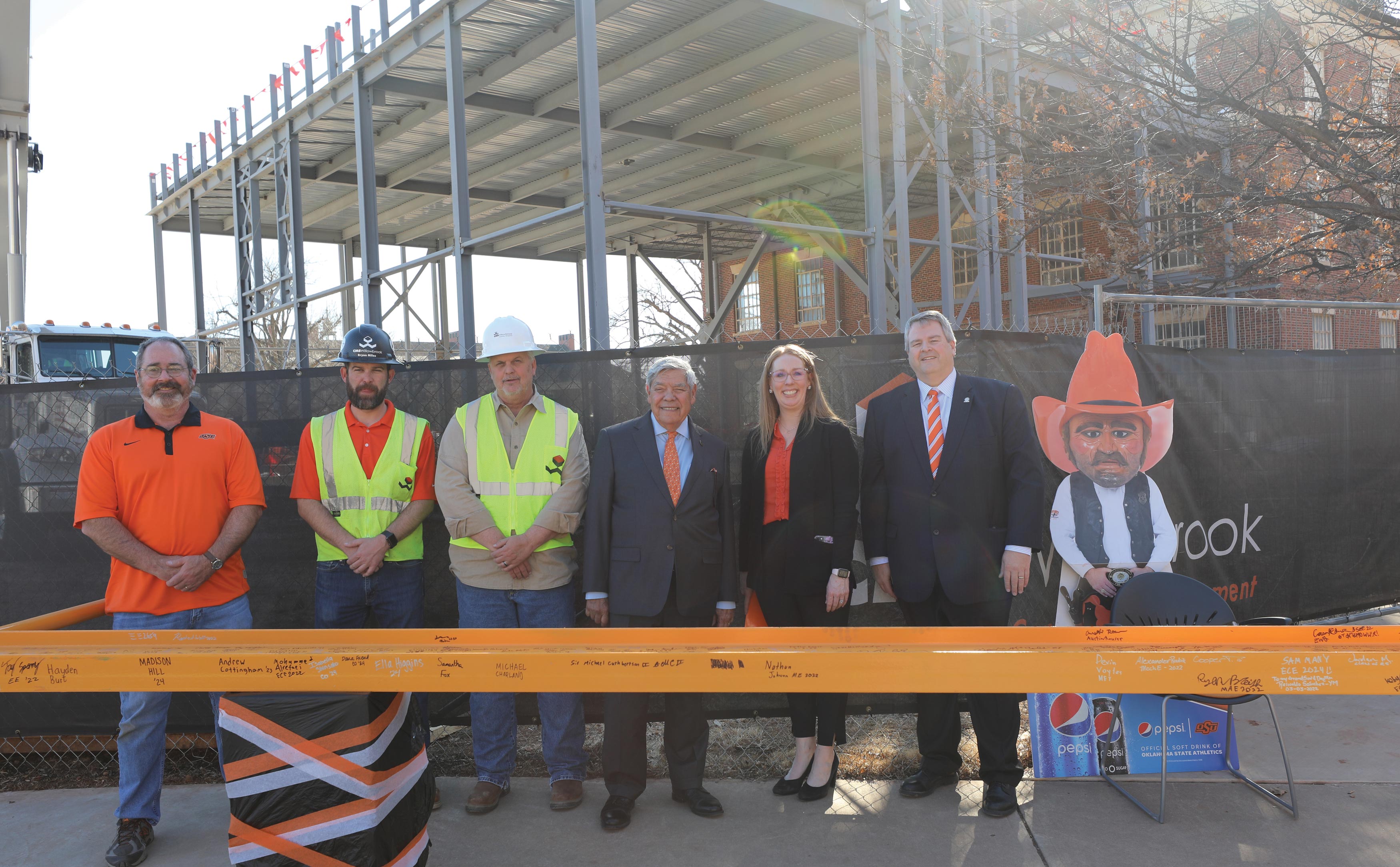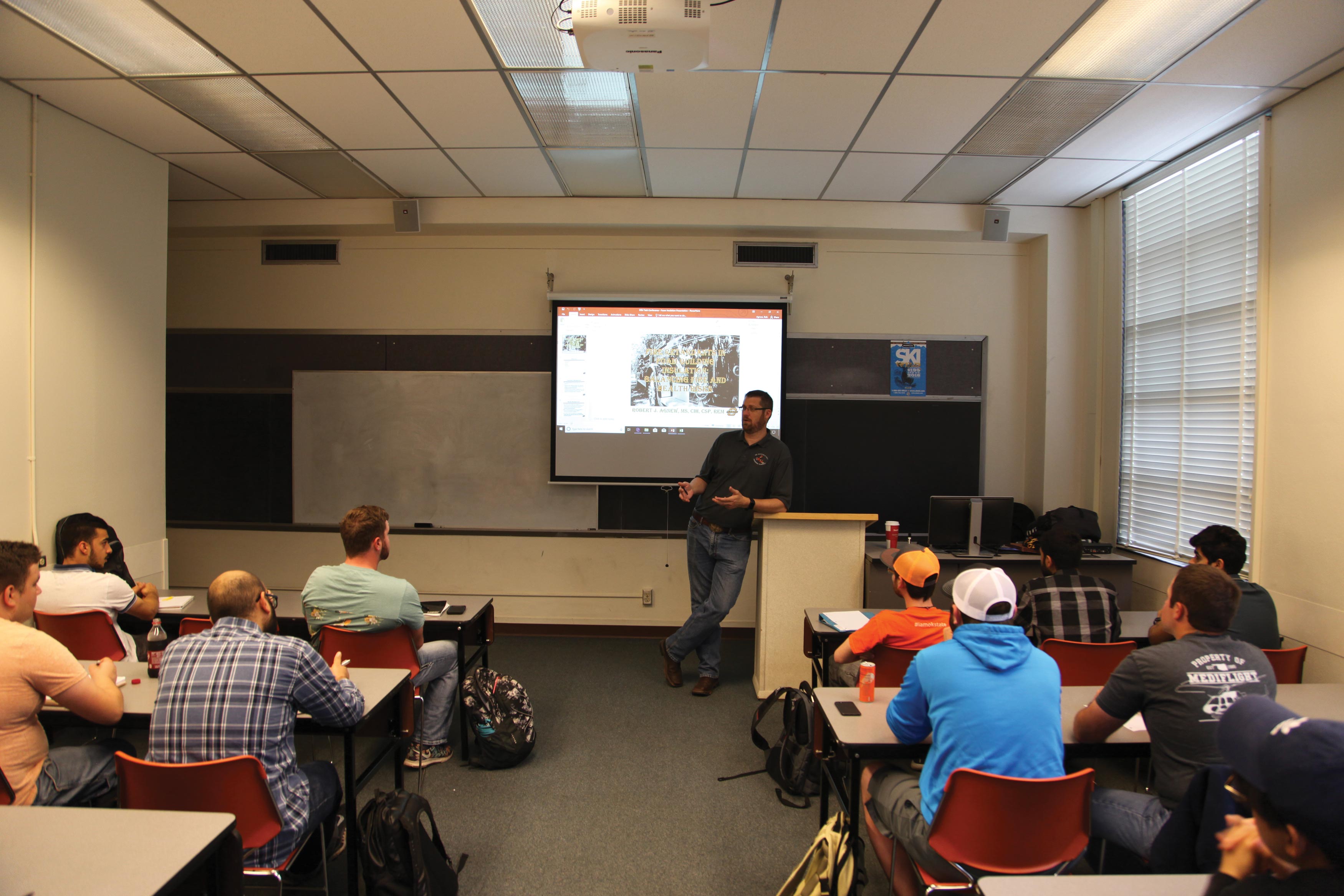
Reopening of renovated Engineering South brings college mainstay full circle
Monday, September 25, 2023
Media Contact: Kristi Wheeler | Manager, CEAT Marketing and Communications | 405-744-5831 | kristi.wheeler@okstate.edu
When looking into the history of the College of Engineering, Architecture and Technology’s oldest building, one can’t leave out how that structure came to be.
Only eight of the 516 pre-Civil War established colleges in the United States offered engineering degrees. Nearly all the universities of that era were liberal arts colleges and professional schools of theology, medicine and law.
However, pressure was mounting on academia to provide engineering and agriculture programming in higher education. In 1857, Justin S. Morrill, a Vermont congressman introduced the first bill to establish land-grant colleges. It was vetoed by President James Buchanan amid concerns that the classical component of education, permitted by the bill, would infringe on the already established liberal arts colleges and universities.
A modified bill, now known as the Morrill Act, was presented and passed in 1862, granting 30,000 acres of public land for each senator and representative to which each state was entitled under the 1860 census to be sold, with all monies derived from the sale of the land to be used to support at least one college. The leading subjects of those colleges would be the agricultural and mechanical arts, to promote the liberal and practical education of the industrial class of people.
After the territory of Oklahoma was established on May 2, 1890, the first territorial legislature convened in Guthrie and enacted bills to create three institutions of higher education, one of them being Oklahoma Agricultural and Mechanical College. As part of the legislative act, the institution was to provide practical instruction in multiple areas of study, including engineering. Classes began at OAMC on Dec. 14, 1891, but a lack of faculty experienced in engineering prevented students from being able to study the subject.
“In pre-renovated Engineering South, there wasn’t much to get excited about. There were a lot of dark hallways and closed doors. I think once we open the doors to Engineering South this fall, ... they are going to say, ‘I want to be here.’”
It wasn’t until the fourth president of what is now Oklahoma State University, George Espy Morrow, employed the first engineer to the faculty that the program became a focus. In 1899, Morrow’s successor received legislative funds to construct the first engineering building to support the growing program. Construction was completed on the space in 1902.
Five years later, when Oklahoma became a state, 40% of college students attending OAMC were enrolled in engineering.
BUILDING A HOME
There have been only three buildings originally dedicated to engineering at OSU that predate Engineering South: the first Engineering Building, completed in 1902; the Civil Engineering building, completed in 1905; and the second Engineering Building, completed in 1912.
All were constructed based on the needs of a growing student body and quickly advancing technical curriculum. Between 1908 and 1912, degrees granted in engineering at OSU exceeded those in any other field. The second Engineering Building was the first to house all four branches of engineering curriculum that had been established by OSU, which were architectural engineering, civil engineering, electrical engineering and mechanical engineering. It also provided drafting rooms, laboratories and classrooms.
In 1933, President Franklin D. Roosevelt’s New Deal was enacted. Under the Public Works Administration program, the federal government provided 45% of the funding for approved projects.

Funding for a new Engineering Building at OSU was approved through the program. In January 1939, 1,294 students were enrolled in engineering. It was the perfect time for the new Engineering Building (Engineering South today) to open for classes. All the engineering departments, except for architecture, moved from the 1912 Engineering Building (now called Gundersen Hall).
With the new building came several pieces of equipment, one being a 200,000-pound capacity Olsen universal testing machine, which is used to measure the strength and product performance of materials such as metals, polymers, textiles, rubbers, adhesives, food and finished components.
Although Engineering South was much needed, OSU would quickly learn that it would have to never grow complacent if it wanted to stay at the forefront of innovation.
KEEPING UP
By 1951, like the original Engineering Building before it, Engineering South was struggling to meet the needs of the most populous group on campus.
In 1948, the engineering branches had combined to form the Oklahoma Institute of Technology — not to be confused with OSU Institute of Technology in Okmulgee, which was called the OSU Technical Branch at the time.
The Oklahoma Institute of Technology consisted of three divisions focused on engineering instruction; engineering research, including an experiment station; and engineering and industrial extension. The Division of Engineering Instruction consisted of a School of Engineering (that now included additional branches in industrial engineering and management, agricultural engineering, and chemical engineering), a School of Architecture and Applied Arts, a School of Technical Training and a School of Flight.

The total enrollment in the engineering division reached 3,240 students, more than 10 times the number of students enrolled only three years prior.
Due to lack of space, the School of Chemical Engineering found itself in a temporary accommodation in a Quonset hut, which was acquired from military war surplus stocks. Through 1951, the Division of Engineering was relying heavily on Engineering South to support its needs.
In the hopes of gaining some breathing room, Dean Melvin R. Lohmann strongly encouraged then university president Oliver Willham to allow him to put a basement space in Engineering South.
Willham agreed, and Lohmann increased the capacity of the building by 25%. Engineering South continued to serve the brunt of the Division of Engineering’s needs until Engineering North was constructed in 1964.
A MUCH-NEEDED RENOVATION
Since its completion 84 years ago, Engineering South has served as a staple of CEAT.
The building offers glimpses of CEAT’s historic past, such as the large monument to engineering honor society Sigma Tau on its northern lawn, which was placed in 1940 to commemorate the chapter that was active from 1923 to 1974; and the aerial towers that grace its roof that were used to support the W5YJ ham radio station as well as several other campus radio stations, which featured programs like the immensely popular “Farmers Hour.”
However, 70 years without a major renovation had begun to show.
“I believe the common frustration that everyone — visitors, faculty, staff and students alike — had with the prerenovated Engineering South building was the fact that the men’s and women’s restrooms were on alternating floors,” said Dr. Jeffrey Young, department head of the School of Electrical and Computer Engineering. “The ventilation system was also from the early days, so there were no heating and cooling zones. The building was centrally heated and cooled on each floor, so sometimes one office was hot while another was cold. It was hard to make the space comfortable for most everyone.”
Dr. Sandip Harimkar, head of the School of Mechanical and Aerospace Engineering, added there was also a struggle to find suitable classrooms for larger classes. The ones in prerenovated Engineering South lacked the updated technology that was needed.

In June 2021, construction began on the structure, as it joined a plethora of CEAT’s newly renovated and constructed buildings, including its twin in Engineering North.
While the exterior facade of Engineering South remains intact, the interior of the building has been completely transformed into the innovative environment needed for CEAT faculty, staff and students to be on par with the quickly advancing world of modern engineering.
Parts of the original Engineering South will remain, though. One of those pieces being the central grand staircase, which leads individuals to the building’s second floor.
“Those stairs represent a connection to the generations of engineers who came before, those engineers who learned both the basics of engineering as well as the specific knowledge of their chosen discipline in this building,” said Dr. John Veenstra, interim CEAT dean. “How many times during their academic career did the typical engineering student climb those stairs to get to the large lecture hall on the third floor? Then they went out into the world and used that education to accomplish amazing things that have benefited Oklahoma, the nation and the world.”
Aside from the grand staircase, and a few other original interior features such as original beaming, portions of concrete and brick wall that were smartly factored into the overall transformation of the building, not much of the original interior is left.
“In pre-renovated Engineering South, there wasn’t much to get excited about. There were a lot of dark hallways and closed doors,” Young said. “I think once we open the doors to Engineering South this fall, that when people come in to Engineering South they are going to say, ‘I want to be here.’”
SPARING NO EXPENSE
In the fall of 2023, Engineering South will again open its doors to another class of future engineers, architects and technologists, but this time it will have a state-of-the-art HVAC system, adequately sized elevators and universal restrooms on every floor.
Rand Elliott, a former CEAT student whose architecture firm Rand Elliott Architects is designing the project, worked with the departments to brighten the building’s concept.
It will feature more glass walls, allowing natural light from the windows to stream in, and elevated ceilings, which will make the building feel more voluminous. Each floor of the building will feature its own unique architectural customizations, designed to meet the needs of the school or department occupying that floor.
Students will find the CEAT Scholarships and Recruitment team, CEAT Career Services and CEAT Special Programs on the first floor of Engineering South. An addition on the east side of the building will house the Zink Center for Competitive Innovation.
“The Zink Center will be an open collaborative space that can be flexibly configured for informal conversations, formal group meetings or seminar presentations,” said Dr. Dan Fisher, director of the center and professor for the School of Mechanical and Aerospace Engineering.
The idea behind the Zink Center for Competitive Innovation is to allow for more face-to-face faculty mentorship opportunities for CEAT’s competitive student teams, as well as to build a bridge of collaboration between CEAT’s engineering students and the OSU Spears School of Business’ students through the Riata Center for Innovation and Entrepreneurship.
“There are some really synergistic opportunities between the Zink Center and the Riata Center,” Fisher said. “And when you get teams of innovative engineers together with forward thinking business and marketing students who really understand how to launch startup companies, the opportunities are endless.”
The east addition will also house the 207-seat Chickasaw STEM Auditorium.
The second floor sees the return of the School of Electrical and Computer Engineering to the building and the third floor will host the School of Mechanical and Aerospace Engineering. The basement former dean Lohmann constructed will house the building’s HVAC system and the fourth floor will house a student study area.
“Since we have been in the General Academic Building, we have felt somewhat disconnected from CEAT and the other schools within our college,” Harimkar said. “We are eager to move closer to the college community again, which will promote cross-departmental collaboration and enhance our ability to engage with our students.”
The multi-million dollar project has been a small price to pay for a building that has meant so much to CEAT for almost a century.
“If there is one common theme used to describe the College of Engineering, Architecture and Technology, it would be growth,” said outgoing CEAT Dean Paul Tikalsky. “And just like the leaders of yesteryear, we will continue to support and promote that growth in our facilities, in our faculty and staff and in our student body, so that we can continue to provide an innovative, world-class education that is at the cutting edge of energy, aerospace, computing, sustainable building technologies and our nation’s future.”
Photos: Kristi Wheeler and OSU Libraries and Special Collections
Story by: Dakota Keith | IMPACT Magazine
